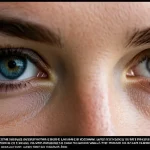Early 20th Century: Foundations of Modern British Women’s Fashion
The early 20th-century trends in British women’s fashion marked a pivotal shift from the rigid Victorian styles to the more relaxed yet elegant Edwardian fashion. This period embraced lighter fabrics and looser silhouettes, reflecting a desire for comfort and freedom. The traditional corset began to give way to softer, S-shaped lines, allowing women to experience a less restricted form of dress.
This stylistic transformation was deeply intertwined with changing social roles. The suffrage movement fueled a push for practicality and empowerment in attire. Women’s clothing was no longer just ornamental but also functional, symbolizing newfound freedoms. The impact of World War I further accelerated this evolution; women working in factories and public services required more practical clothing, which influenced everyday styles.
Additional reading : What Are the Latest Style Icons of UK Women’s Fashion?
Notable designers such as Paul Poiret also helped usher in these revolutionary changes by advocating for looser fits and decorative, exotic influences. British women’s fashion history during this era reflects an interplay between societal progress and sartorial innovation, laying the groundwork for future fashion revolutions.
1920s–1940s: Revolution, Resilience, and Wartime Utility
The 1920s British fashion era introduced a striking departure with the rise of the flapper dress, emblematic of youthful liberation. Hemlines rose dramatically, and silhouettes became more boyish, promoting ease of movement and reflecting Jazz Age exuberance. This shift mirrored broader social changes as women embraced new freedoms and sought fashion that matched their evolving lifestyles.
Additional reading : How Has UK Women’s Fashion Evolved Over Decades?
The Great Depression and World War II profoundly affected British women’s clothing. Economic hardships led to wartime fashion adaptations—rationing meant fabrics were scarce, promoting utility clothing designed for durability and efficiency. To cope, many women creatively repurposed garments, evidencing resilience in style despite hardships.
Postwar style marked a return to femininity, with silhouettes emphasizing the waist and full skirts, contrasting wartime austerity. This era balanced practical needs with renewed optimism, as the fashion industry revived. The blend of wartime fashion and postwar renewal showcased British women’s ability to adapt style to societal conditions, reflecting resilience and transformation in British women’s fashion history.
1950s–1960s: Youthful Spirit and Cultural Shifts
The 1950s fashion era reflected postwar optimism through elegant, structured designs. Christian Dior’s “New Look” popularized cinched waists and full skirts, reviving femininity in British women’s fashion history. This elegance symbolized renewal and a return to luxury after years of wartime austerity. Fabrics were richer, and silhouettes embraced classic sophistication, appealing to women eager for refinement.
The 1960s fashion period introduced a vibrant shift with the rise of youth culture. Mod culture exploded, championing bold colors, geometric patterns, and the revolutionary mini skirt. Designer Mary Quant became synonymous with this transformation, empowering women to express individuality and confidence. The relaxed tailoring of 1960s fashion contrasted the structured 1950s, reflecting increased social freedoms and cultural experimentation.
East London emerged as a hotspot for trendsetting, where bold prints and streetwise styles mixed with avant-garde influences. This era’s blend of youthful spirit and cultural shifts reshaped British women’s fashion history, encouraging women to embrace innovation while expressing personal identity through clothing.



